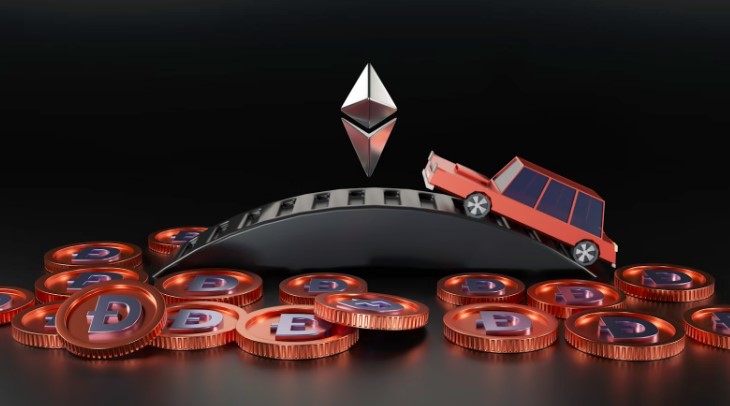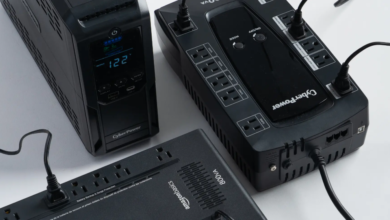How Blockchain is Reducing Transaction Costs in Digital Wallets

As the digital economy continues to grow, the demand for efficient and cost-effective financial solutions is at an all-time high. Blockchain technology has emerged as a powerful disruptor in the financial services sector, particularly in the realm of digital wallets. This revolutionary technology not only enhances security and transparency but also significantly reduces transaction costs. For individuals and businesses involved in crypto prop trading, understanding how blockchain minimizes costs can provide valuable insights into optimizing their trading strategies.
Understanding Blockchain Technology
At its core, blockchain is a decentralized, distributed ledger that records transactions across multiple computers. This technology enables participants to verify and secure transactions without relying on a central authority, such as a bank or financial institution. Each transaction is recorded in a block and linked to previous transactions, forming a chain of blocks that is immutable and transparent.
The decentralized nature of blockchain means that it eliminates intermediaries, such as banks and payment processors, which traditionally add layers of fees and delays to transactions. By streamlining the process and reducing reliance on these middlemen, blockchain significantly cuts transaction costs associated with digital wallets.
Read also: How Technology Plays A Part In Daily Property Management?
Lower Transaction Fees
One of the primary ways blockchain reduces transaction costs is by eliminating intermediary fees. Traditional financial transactions often involve multiple parties, each taking a cut of the transaction fee. For example, when making a cross-border payment through traditional banking channels, both the sending and receiving banks may charge fees for processing the transaction. These fees can add up, especially for larger transactions.
In contrast, blockchain transactions are conducted directly between users. By bypassing intermediaries, blockchain technology enables lower transaction fees. For crypto prop trading, where traders frequently make multiple transactions daily, these savings can accumulate significantly over time, allowing traders to allocate more capital toward their investments rather than toward fees.
Faster Transactions
In addition to lowering costs, blockchain technology enhances the speed of transactions. Traditional banking systems often require several days to settle cross-border payments due to various processing layers and time zones. Conversely, blockchain transactions can be processed almost instantly, regardless of geographical boundaries.
This rapid processing is particularly beneficial for those engaged in crypto prop trading, where timing is crucial. Quick transactions allow traders to capitalize on market fluctuations—including shifts in conversion rates like TON to USD or other cryptocurrencies—without the delays often associated with traditional banking methods. Faster transaction times mean lower opportunity costs, enabling traders to react swiftly to market changes and enhance their profitability.
Transparency and Trust
Another significant advantage of blockchain technology is its inherent transparency. Every transaction recorded on the blockchain is visible to all participants in the network, creating a level of trust that is often lacking in traditional financial systems. This transparency minimizes the risk of fraud and errors, leading to fewer disputes and, consequently, lower costs associated with resolving these issues.
For traders in the crypto prop trading space, transparency is critical. The ability to verify transactions on the blockchain assures traders that they are engaging in fair and trustworthy exchanges. This trust reduces the need for costly dispute resolution mechanisms and increases confidence in the overall trading environment.
Improved Security
Blockchain technology enhances security through its decentralized nature and cryptographic algorithms. Each transaction is encrypted and linked to the previous transaction, making it nearly impossible for malicious actors to alter the data. This robust security reduces the risk of fraud and cyberattacks, which can lead to significant financial losses for users of digital wallets.
For participants in crypto prop trading, security is paramount. The ability to execute transactions with confidence that they are protected from fraud and hacking reduces potential losses, making blockchain an attractive option for digital wallet users. By minimizing security-related costs, traders can focus more on their trading strategies rather than on safeguarding their assets.
Integration with Smart Contracts
Smart contracts, which are self-executing contracts with the terms of the agreement directly written into code, are another way blockchain can reduce costs in digital wallets. These contracts automatically execute transactions once predetermined conditions are met, eliminating the need for intermediaries or manual processing.
For crypto prop trading, smart contracts can automate various processes, such as trade settlements and payment distributions. By reducing the need for human intervention, smart contracts lower operational costs and increase efficiency. This automation allows traders to execute complex trading strategies with minimal overhead, enhancing their overall trading performance.
Conclusion
Blockchain technology is revolutionizing the financial landscape by significantly reducing transaction costs in digital wallets. By eliminating intermediaries, accelerating transaction speeds, enhancing transparency and security, and leveraging smart contracts, blockchain provides a more efficient and cost-effective solution for users. For those engaged in crypto prop trading, these advantages translate into improved profitability and greater flexibility in their trading strategies. As the adoption of blockchain technology continues to grow, the financial services sector will likely witness even more innovations that further reduce transaction costs and enhance user experiences.



